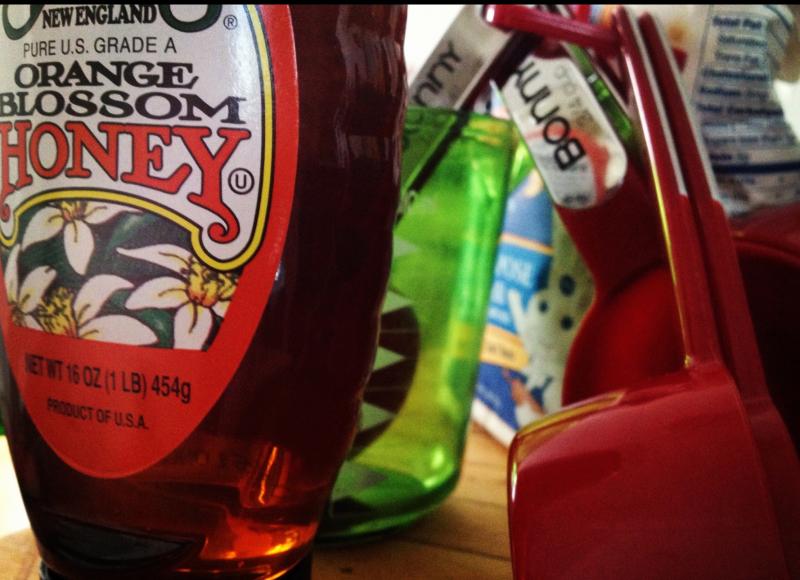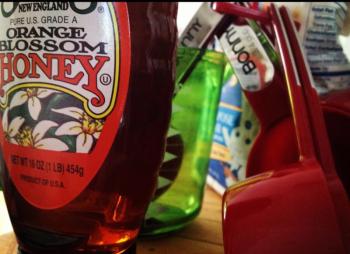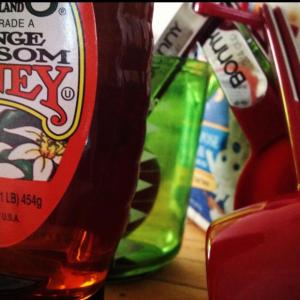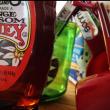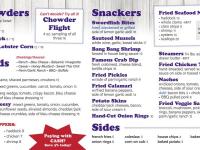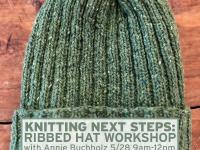National Honey Month recipes
I recently received a nice note from “Ginny” whose question inspired this week’s column. She said she has noticed that I often stipulate a mild flavored honey in some recipes and asked “just what types of honey are milder than others?”
Thanks for the question and your lovely note, Ginny. In honor of your question and since September is National Honey Month, this sweet column is just for you. Enjoy!
Honey is an invert sugar formed by an enzyme from the nectar of flowers. The nectar is gathered by bees and made into a stable, high energy food with the flavor of the honey dependent upon the type of flower from which the nectar originates.
The U.S. produces more than 300 varieties of honey but the thick amber-colored honey we commonly see in our grocery stores is most often clover honey.
Most types of honey contain about 17 percent moisture and about 98 percent of the remaining solids are carbohydrates. Honey is one of the “superfoods” full of healthy benefits including a variety of vitamins, minerals and amino acids as well as bioflavonoids which support our immune systems. It also contains pre- and probiotics, which increase the good bacteria that help maintain healthy digestion.
Honey has been used for generations as a way to soothe a sore throat especially stirred into hot tea. One study found that a spoonful of buckwheat honey at bedtime offers an effective, natural alternative for quieting children's nighttime coughs.
However, there is one caveat to this so-called remedy. Because honey may contain spores that contain infant botulism (a rare but potentially dangerous disease), honey should never be given to babies until they are at least a year old. Because their digestive systems aren't fully developed, the spores can grow and release the toxin. And never dip a pacifier in honey or sweeten juices or cereal with honey.
When buying honey, select mild flavored varieties such as clover or acacia for salad dressings. The darker, more assertive flavored honeys, such as wildflower honey or tulip tree honey, are best for long cooking recipes, such as barbecue sauces and glazes.
Honey should be stored at room temperature. If it begins to form crystals remove the lid and warm the jar in a pan of hot water for a few minutes.
And to really appreciate honey, think about this bit of trivia: To produce one pound of honey, a bee colony will visit 2 million flowers and travel 55,000 miles.
WHICH TYPE OF HONEY?
| TYPE | COLOR | FLAVOR | SUGGESTED USES |
| Alfalfa | Light | Mild, delicate | Baking, sweetening tea |
| Avocado | Dark | Rich, buttery | Salad dressing, glaze for chicken, pork or roasted vegetables |
| Blueberry | Light | Full, fruity | Baking, sauces |
| Buckwheat | Dark | Strong, molasses-like | Barbecue sauces, yeast bread |
| Clover | Light | Mild, subtly spicy | Baking, sweetening tea |
| Eucalyptus | From light to dark | Tends to be strong with a slight medicinal taste | Barbecue sauces |
| Fireweed | Light | Delicate | Desserts, toppings for pancakes |
| Orange Blossom | Light | Mild with a light citrus flavor | Baking, sweetening tea, drizzled over warm biscuits |
| Sage | Light | Mild, delicate | Drizzled over strong-flavored cheese as an appetizer |
| Tupelo | Light amber with touch of green | Mild but distinctive | Baking, desserts, glazes |
| Wildflower | Usually dark | Deep, rich | Sauces, drizzled over pancakes |
Honey mustard salad dressing
Adjust the amount of honey to get the sweetness you prefer.
- 3/4 cup plain yogurt
- 1/4 cup mayonnaise
- 4 Tbsp. Dijon mustard
- 1/4 cup honey
- 1 Tbsp. cider vinegar
- 1/8 tsp. cayenne pepper
Combine all ingredients in a small bowl whisking to combine. Store in refrigerator in a covered container. Yield: 1 1/2 cups
Citrus honey salad dressing
Great for salads with fruit in them – think baby spinach with pink grapefruit sections, slivers of red onion and crumbled bacon for a garnish.
- 1/4 cup white wine vinegar
- 1/4 cup vegetable oil
- 3 Tbsp. orange blossom honey
- 1/2 tsp. grated lime peel
- 1/8 tsp. salt
- 1/4 tsp. freshly ground black pepper
Combine all ingredients in a small bowl whisking to combine. Store in refrigerator in a covered container. Yield: about 3/4 cup.
Honey-glazed pork tenderloins
Take care not to overcook the pork tenderloin, because they are very lean and easy to dry out.
- 1/2 tsp. garlic powder
- 1/2 tsp. ground chipotle pepper
- 1/2 tsp. freshly ground black pepper
- 2 pork tenderloins (about 1 lb. each)
- 1 Tbsp. canola oil
- 1/2 cup Tupelo honey
- 2 Tbsp. reduced-sodium soy sauce
- 1 Tbsp. balsamic vinegar
- 1 tsp. sesame oil
Combine garlic powder with both peppers and rub over pork. Heat oil in a large ovenproof skillet, brown pork on all sides. Remove pan from heat.
Combine honey, soy sauce, vinegar and sesame oil in a small bowl and whisk to blend. Spoon over pork and place pan in a preheated 350 F oven; bake for 20 to 25 minutes or until a thermometer reads 145 F, basting occasionally with pan juices. Let stand for five minutes before slicing. Yield: six servings.
Honey almond bars
Buttery and very rich! A small, two-bite bar will satisfy your sweet tooth.
For the crust:
- 1 3/4 cups all purpose flour
- 1/2 cup (1 stick) unsalted butter cut into pieces
- 1/2 cup sugar
- 1 large egg
- FOR THE TOPPING:
- 2 cups slivered almonds
- 1 1/2 cups (3 sticks) unsalted butter
- 3/4 cup clover honey
- 2 drops almond extract
To prepare the crust: Place all ingredients in food processor and pulse until dough holds together. Pat into a rimmed 12.5 by 17.5-inch pan (like a jelly roll pan).
To prepare the topping: Combine almonds, butter, honey and extract in a heavy, medium size saucepan set over high heat. Bring to a boil; cook two to three minutes, stirring constantly. Remove from heat and cool five minutes. Spread over dough in pan and place in a preheated 350 F oven. Bake 20 to 25 minutes. Cool completely before cutting into small bars.
Paula Anderson is a freelance journalist specializing in food, entertaining and nutrition. She writes for several newspapers, as well as Maine Food & Lifestyle Magazine. She divides her time between Scarborough and Big Pine Key, Fla., where she lives with her husband Peter and their kitty Mina. Correspondence can be addressed to her at the Boothbay Register, P.O. Box 357, Boothbay Harbor, ME 04538 or the Wiscasset Newspaper, P.O. Box 429, Wiscasset, ME 04578. You can also write to her directly via email at pander@maine.rr.com.
“If you have no honey in your pot, have some in your mouth.” Benjamin Franklin
Event Date
Address
United States

